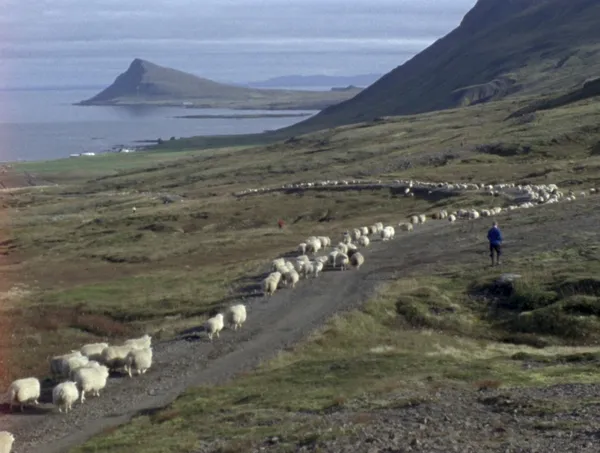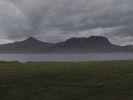Eye For Film >> Movies >> The Last Autumn (2019) Film Review
The Last Autumn
Reviewed by: Jennie Kermode

How does it feel to say goodbye to a place where you have spent your whole life, where the land has been managed in the same way, generation after generation, going back centuries into the past?
Life in rural Iceland is changing. A combination of climate change, thinning soil and disinterest in farming among younger generations means it’s now hard to keep a rural homestead going, and for Ulfar and Oddny age is now a factor too. They simply don’t have the strength to continue chasing around the steep hills after sheep, nor to endure the fierce, freezing Arctic winds. Accordingly this will be their last Autumn on the old family property; the last season of herding and fishing; a time to say goodbye.

Yrsa Roca Fannberg’s documentary opens with a poetic take on Ginnungagap, the Old Norse myth that tells of the creation of the world out of nothingness. Though it’s rarely mentioned, the Norse view of time is a cyclical one, the death of one world leading to the birth of another – a common way of looking at things for a farming people – so this reference seems very much pertinent to the story that then unfolds, though we cannot know what that new world will look like. A life in the city for the ageing couple? A rewilding of the land? Relatives come to bring them comfort in these difficult times, people who grew up on the farm or spent summers there. Oddny remarks that she has been able to see the tall spur of land known as the the Horn of Reykjanes all her life.
This is still a working farm, and as Fannberg films, life is going on all around her. A beautiful, affectionate collie dog wants to play at every opportunity; working is less appealing, but the sheep have to be brought into the fold, secure against the fist chill of winter, then brought out a few at a time to be lifted into a van and sold. Even by sheep standards, they’re reluctant; this is not part of the pattern of life as they know it. Men chase the lost ones by running down steep scree slopes, shouting as they go. Volunteers from other nearby farms step in as needed, part of a tradition of community assistance which as always bee necessary to make life viable in this harsh place.
Despite its harshness, it is undeniably beautiful. Fannberg presents it first in square format black and white, then shifts into colour as if bringing us up to date, inviting the viewer to connect more with its age. As she moves around the farm we are presented with layered images, things glimpsed through glass. People come and go through a glass-panelled kitchen door which, when closed, reflect the clifftop and the sea beyond. Similarly, background sounds provide us with information about what’s going on nearby whilst we are observing a specific task or somebody is talking.
Emerging from this chaos like the newly-formed world from Ginnungagap, the film has an organic quality, seeming like another product of the land. A product, perhaps, or perspective, story and memory, destined to linger like the skeleton of an Autumn leaf long after the rest is gone.
Reviewed on: 01 Mar 2020
















